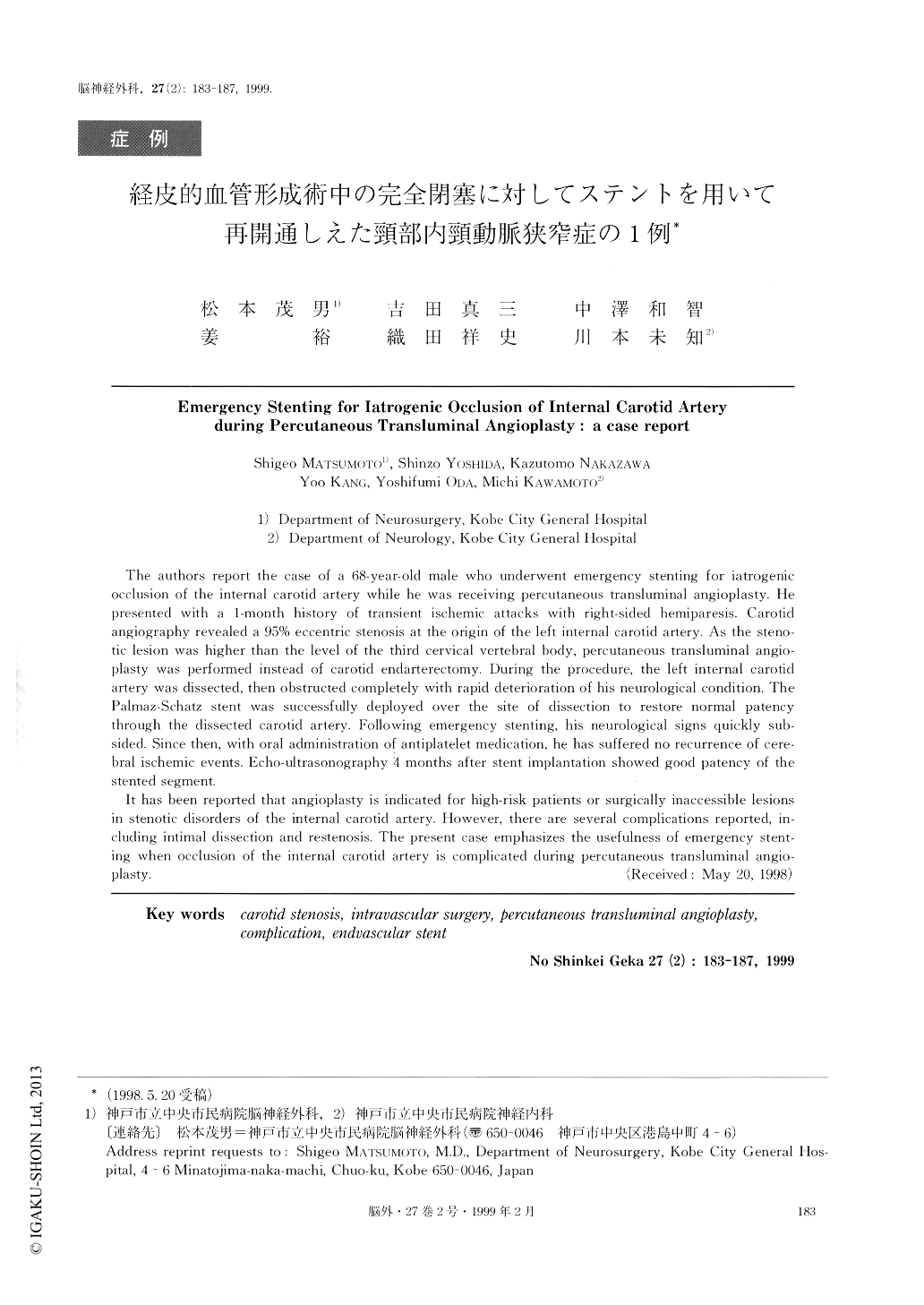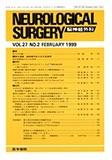Japanese
English
- 有料閲覧
- Abstract 文献概要
- 1ページ目 Look Inside
I.はじめに
頸部内頸動脈狭窄症に対する頸動脈血栓内膜剥離術(carotid endarterectomy:CEA)の有効性と安全性はすでに確立されているといってよいが,狭窄部位が高位に及んだり,全身状態が不良な症例など外科的処置が困難な場合は経皮的血管形成術(percutaneous transluminal angioplasty;PTA)が選択される.われわれはPTA操作中にかえって内膜剥離による完全閉塞を来たしたため,ステント留置(stenting)によって再開通しえた1例を経験した.症例を呈示し,治療上の問題点について検討したので報告する.
The authors report the case of a 68-year-old male who underwent emergency stenting for iatrogenicocclusion of the internal carotid artery while he was receiving percutaneous transluminal angioplasty. Hepresented with a 1-month history of transient ischemic attacks with right-sided hemiparesis. Carotidangiography revealed a 95% eccentric stenosis at the origin of the left internal carotid artery. As the steno-tic lesion was higher than the level of the third cervical vertebral body, percutaneous transluminal angio-plasty was performed instead of carotid endarterectomy. During the procedure, the left internal carotidartery was dissected, then obstructed completely with rapid deterioration of his neurological condition. ThePalmaz-Schatz stent was successfully deployed over the site of dissection to restore normal patencythrough the dissected carotid artery. Following emergency stenting, his neurological signs quickly sub-sided. Since then, with oral administration of antiplatelet medication, he has suffered no recurrence of cere-bral ischemic events. Echo-ultrasonography 4 months after stent implantation showed good patency of thestented segment.
It has been reported that angioplasty is indicated for high-risk patients or surgically inaccessible lesionsin stenotic disorders of the internal carotid artery. However, there are several complications reported, in-cluding intimal dissection and restenosis. The present case emphasizes the usefulness of emergency stent-ing when occlusion of the internal carotid artery is complicated (luring percutaneous transluminal angio-plasty.

Copyright © 1999, Igaku-Shoin Ltd. All rights reserved.


